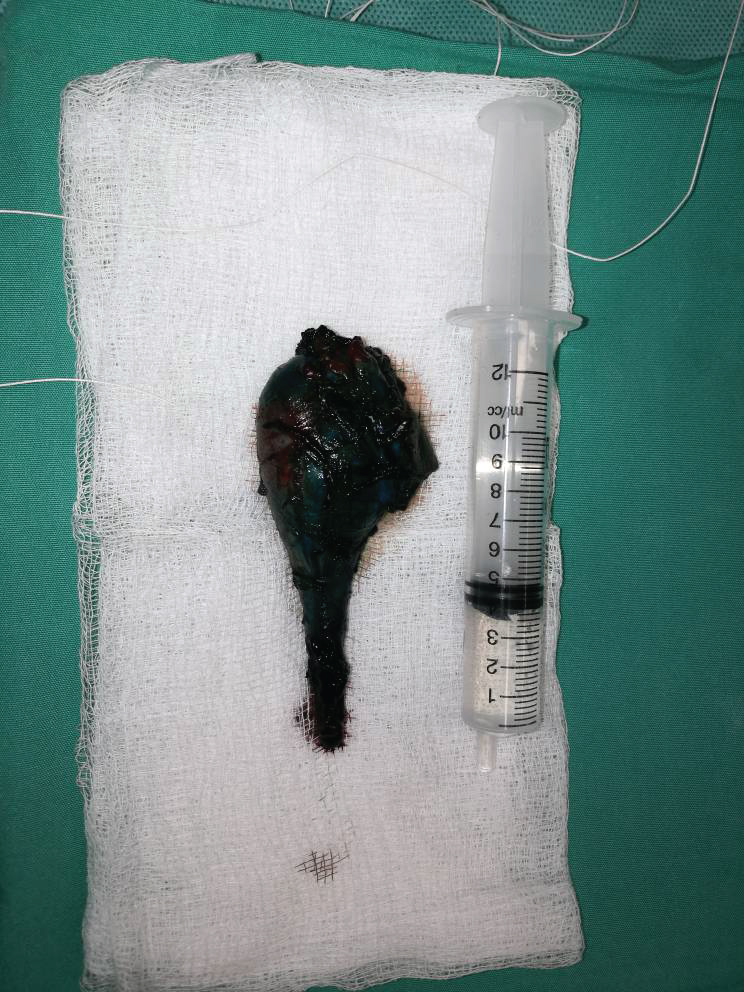A 25-year-old male patient undergoes treatment for a branchial cleft cyst and develops complaints of blue urine after the treatment.
A 25-year-old man presented to the outpatient department with complaints of recurrent swelling on his right lower neck for the past 2 years. He reported an association between the swelling and the upper respiratory infections that an upper respiratory tract infection always preceded the swelling.
Physical Examination:
On physical examination of the neck, a 5 by 5 cm cystic swelling was noticed on the right lower neck anterior to the sternocleidomastoid muscle. A sinus opening was also seen, as shown in the figure.
Imaging:
Computed tomography (CT) fistulogram of the neck was performed, which correlated with the physical examination. The CT fistulogram findings were suggestive of a branchial cleft cyst. No fistula was appreciated.
Surgery:
The patient was administered an intralesional injection of 5 mL of methylene blue via the sinus opening followed by a surgical excision via the step ladder technique. The injected dye helped delineate the cyst walls which is a challenging task due to fibrosis secondary to repeated infections. The cyst was removed completely.

Post-operatively:
Around 6 hours after the surgical excision, the patient complained of nausea, vomiting, and blue-colored urine.

Management:
The patient was managed medically with intravenous fluids, and he was monitored closely for neurotoxicity. After 24 hours, the color of the urine normalized, and the patient’s nausea and vomiting resolved.
Methylene blue is both a medication and a dye. It is used to treat methemoglobinemia in cases where methemoglobin levels are greater than 30%. It also has a role as an antimalarial in hepatopulmonary syndrome and septic shock.
As a dye, methylene plays a vital role in surgical fields to delineate lesions and target organs or structures.
In patients with branchial cleft anomalies, methylene blue helps identify the extent of the swelling, consequently helping in successful excision, especially in cases with recurrent infections. The side effects of methylene blue are rare but are seen specifically when the body is not able to filter the dye. Normal renal functioning is required for the filtration of methylene blue.
The common adverse effects that usually do not require medical attention include nausea, vomiting, skin, and urine discoloration. However, some side effects require immediate medical attention, including confusion, headache, chest pain, dizziness, excessive sweating, and abdominal pain, which may be symptoms of underlying neurotoxicity and cardiac toxicity.
References:
Ginimuge PR, Jyothi SD. Methylene blue: revisited. J Anaesthesiol Clin Pharmacol. 2010;26(4):517-520.
Ting L, Toong LY (2018) Blue Urine. Clin Med Img Lib 4:120. doi.org/10.23937/2474-3682/1510120




